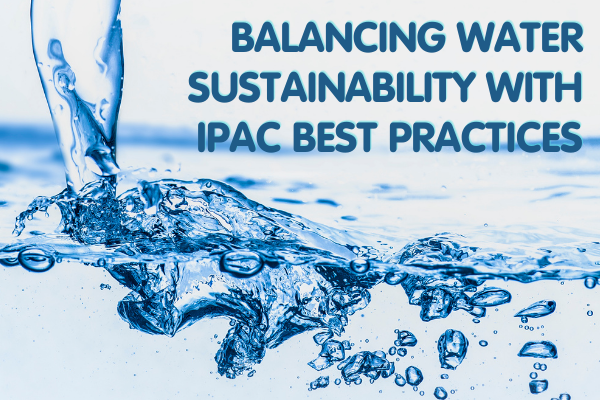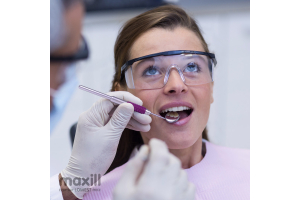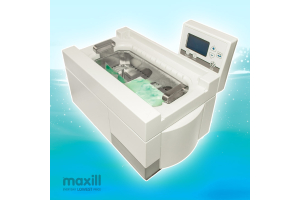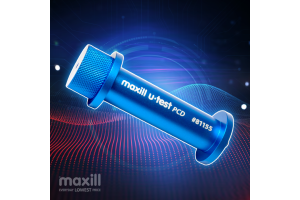Water Sustainability in Dentistry: What Can We Do?

"Water, water, everywhere and not a drop to drink."
This old saying may not be far from the truth for some of the world's populations.
Water is one of the most significant resources and is sometimes taken for granted.
Water covers 70% of the earth's surface; however, less than 1% is available for human use, and 1 in 9 (approximately 783 million) people do not have access to safe or clean drinking water. 1
Although most of us can turn on the faucet for unlimited access to clean and safe water, many people in other countries do not have this luxury.
In many populations, water insecurity through taps, pipes, or wells is nonexistent, is financially unobtainable, unsuitable, or unsustainable.
All people should have the right and ability to access clean water.
Since 1993, On March 22 of every year, the United Nations remembers and celebrates World Water Day.
In observance of this day, the United Nations hopes to raise awareness of the 2 billion people currently living without access to safe water and sanitation.
The principal focus of World Water Day is to encourage action toward the goals of sustainable developments for water and sanitation for all by 2030. 2
Some Significant World Water Day Stats.1
- 783 million people do not have access to clean and safe water worldwide
- 1 in 9 people worldwide do not have access to safe and clean drinking water
- 443 million school days are lost each year due to water-related diseases
- In developing countries, as much as 80% of illnesses are linked to poor water and sanitation conditions
- Half of the world's hospital beds are filled with people suffering from a water-related disease
- Less than 1 in 3 people in sub-Saharan Africa have access to a proper toilet
- Globally we use 70% of our water sources for agriculture and irrigation and only 10% for domestic uses
- By investing in clean water alone, young children worldwide can gain more than 413 million days of health!
The precious resource of water is a fundamental need,
For human survival, agriculture, industry, and ecosystems, water is vitally important.
As individuals, communities, and governments, we must work to protect groundwater from pollution and use it responsibly to ensure its sustainability.
Balancing Water Sustainability with IPAC in Dentistry
How Does Water Sustainability Affect Us in Dentistry?
We cannot take for granted our access to safe water.
Water is essential in our dental offices for irrigation, as a coolant in our handpieces, and lavage during ultrasonic use.
The safety and cleanliness of our dental unit waterlines (DUWL) are vitally important to keeping our patients free from exposure to pathogenic bacteria in the biofilm layer.
Biofilms are sticky, slimy films that form inside the unit waterlines.
The level of biofilm formation increases in unit waterlines because the tubing is long and thin, water flow through the lines is low, and water sits in the lines during periods of unuse, such as overnight or on the weekend.
When water lines are left untreated, human pathogens such as Legionella, Pseudomonas aeruginosa, and Mycobacterium abscessus can exist and multiply within a biofilm on the line's surface.
Not appropriately treating water and waterline could pose unfavorable health risks for dental personnel and patients.3
The Centers for Disease Control (CDC) include specific recommendations on the use of coolant and irrigating solutions in dentistry and on the control of microbial contamination in water used for dental treatment:4
CDC Recommendations on the Use of Coolant and Irrigating Solutions and Controlling Microbial Contaminations in Water
- Use water that meets the CDC recommended limit for dental procedural water (i.e., <500 CFU/ mL of heterotrophic water bacteria) for routine dental treatment.
- Discharge water from all unit lines (including handpiece, air/water syringe, and ultrasonic) for 2 minutes after prolonged periods of unuse, such as overnight and on weekends.
- Consult with the dental unit manufacturer for appropriate methods and equipment to maintain the recommended dental water quality.
- Follow recommendations for monitoring water quality provided by the manufacturer of the unit or waterline treatment product.
- Discharge water and air for a minimum of 20–30 seconds after each patient, from any device connected to the dental water system that enters the patient's mouth (e.g., handpieces, ultrasonic scalers, and air/water syringes).
- Consult with the dental unit manufacturer on the need for periodic maintenance of anti-retraction mechanisms.
RELATED: Natural Dental Products: Good or Bad for Your Clients?
Water Fluoridation & Water Sustainability Concerns
When we, as dental personnel, think of water, we also think of fluoridation.
The CDC states that fluoride is one of 10 outstanding public health achievements of the 20th century.
Research has proven over the last 75 years that adding fluoride to public water systems is a safe and effective way to prevent tooth decay.
Still, caries remains one of the most common chronic childhood diseases.
Although most water contains some level of fluoride, it is still not enough to prevent caries, so public water systems in communities supplement the level of existing fluoride in their water supplies to match the ideal level to prevent tooth decay.
The community water suppliers adjust the recommended fluoride level to 0.7 milligrams per litre of water.
The American Dental Association, American Academy of Pediatrics, US Public Health Service, and World Health Organization recommend community water fluoridation.5
There have been some concerns about the flotation of water and its effects on water sources. specifically groundwater. Environmental concerns have been investigated in literature reviews for the Tacoma–Pierce County Health Department, Washington (August 2002),6 and the City of Port Angeles, Washington (October 2003),7 and no direct negative impact of water fluoridation on the environment has been established.
There are, however, real concerns around sources of fluoride pollution unrelated to water fluoridation, according to WHO 8.
"WHO warns that unless proper environmental safeguards are adhered to, there is a danger of its occurring in developing countries with increasing industrialization. Fluoride pollution is therefore recognized as an industrial hazard; however, water fluoridation is not considered a potential source of fluoride pollution" 8
How Do We Balance Water Sustainability and IPAC Best Practices?
Water conservation is a major topic around the *ahem* watercooler these days.
We want to keep our patients safe.
The best way to do that is to follow IPAC best practices.
But how do dental professionals balance keeping our the water we use on our patients safe by following best practices and while doing our part in water sustainability?
5 Easy Ways Your Office Can Be More Water Conscious
- Post signs in practice restrooms and break areas encouraging water conservation.
- Switch to a water friendly DUWL treatment system. maxills Dental Unit Water Line Treatment Kit is 100% biodegradable for water sustainability (Only available maxill.com Canada)
- Advocate for water friendly industrial practices.
- Only run dishwashers, washing machines and sterilizers when they are full. Pro Tip: Skip the cassette and load more in your sterilizer with our maxill steri-sox Multi-Channel Sterilization Pouches and our maxill u-test PCD - Process Challenge Device
- Educate your patients to turn off the faucet when they brush.
To Sum It Up
Water is a vital necessity for our existence and health.
Unfortunately, many areas of the world lack access to clean and sustainable water supplies.
For dental offices that want to be water conscious, it can be hard to find the balance between following IPAC best practices and using less water.
There are several things that dental offices can do to be more water conscious.
Water conservation isn’t about being stingy or sacrificing patient safety.
Water sustainability in dentistry is about finding an efficient way to use and reuse a limited and valuable resource and everyone can do their part.
Let us continue to value what we sometimes take for granted.
Let us all celebrate and find more sustainable solutions.
Not just on World Water Day, but every day!
References:
- The Water Project. (n.d.) Water Scarcity & the Importance of Water.
- World Water Day. (n.d.) Groundwater-Making the Invisible Visible.
- Organization for Safety, Asepsis, and Prevention (OSAP). (n.d.) Dental Unit Waterlines (DUWL).
- Centers for Disease Control and Prevention: Recommended infection control practices for dentistry, 1993. MMWR 1993;42(No. RR-8):1-12.
- Centers for Disease Control and Prevention. (n.d.) Community Water Fluoridation.
- Tacoma-Pierce County Health Department. Tacoma–Pierce County Health Department Fluoridation Resolution. WAC 197- 11-960 Environmental Checklist. August 2002.
- City of Port Angeles Public Works and Utilities, Washington. SEPA Fluoridation Checklist. October 2003.
- Reeves TG. Current technology on the engineering aspects of water fluoridation. Paper presented at National Fluoridation Summit, September 8, 2000 Sacramento, CA.









